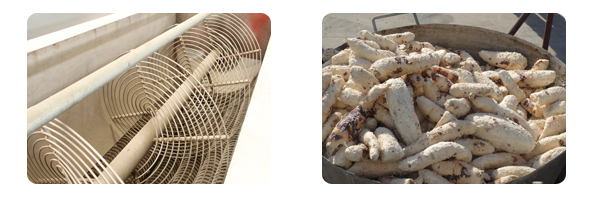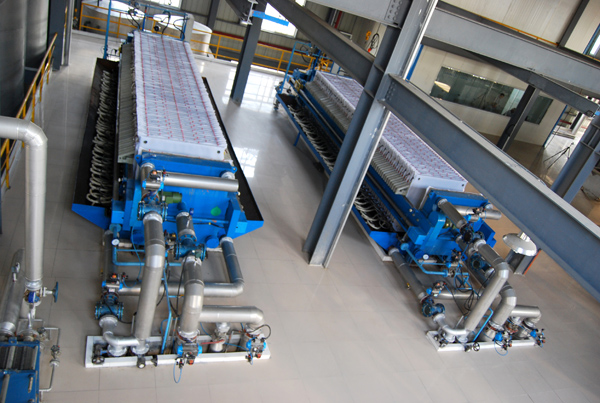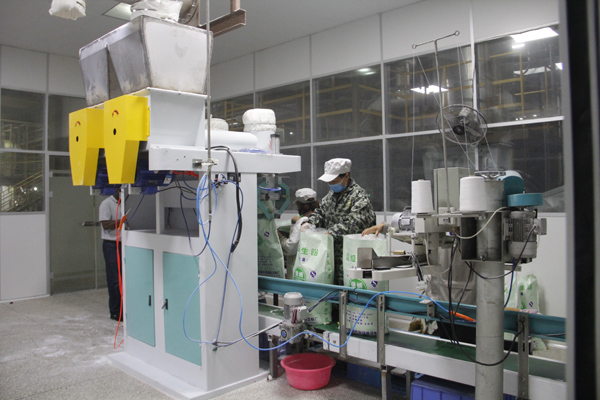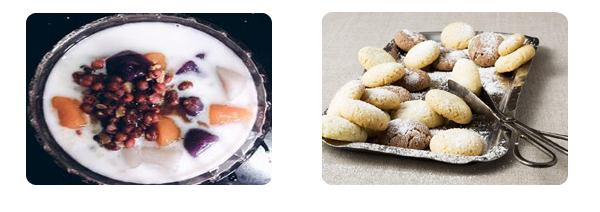What is the use of cassava flour ?
In the world of gluten-free baking, it takes real scientific acumen to develop recipes that are texturally comparable to traditional gluten-filled goodies; however, baking with cassava flour might be one of the most underrated ingredients in terms of making the process easier. Though not as widely popular as some other alternative flours, cassava flour can be a highly useful ingredient in catering to specialty diets, as it is grain-free, gluten-free, and nut-free. Let’s dig in a little deeper.
 Cassava
Cassava
Whats is cassava flour?
Maybe the more obvious question here is what is cassava? Cassava is a tropical plant that bears an energy-packed, tuberous root that’s rich in carbohydrates and is used in both sweet and savory dishes. The root is a staple food item in many South American and African countries, and is often referred to as yuca or manioc. The cassava tuber is dried and ground to produce cassava flour.
Finely ground, the flour has a very smooth, almost powdery, consistency that’s ideal for baking traditionally more dense treats, such as brownies or cookies. The root is mildly flavored with a faint nutty taste—however, it tends to have a more neutral flavor compared to other alternative flours like almond flour or coconut flour. It is also one of the few gluten-free flours that has a near 1:1 substitution ratio with all-purpose wheat flour in most baked good recipes that do not require significant rising. Being that cassava flour does not rise well when mixed with yeast (because of its lack of gluten), it is not the best substitute when it comes to yeasted baked goods.
 Cassava flour
Cassava flour
Cassava flour contains the fiber from the root that makes it ideal for preparing more structured dishes. Tapioca flour is better suited for achieving smooth, rich mousses, sauces, puddings and gravies.
There are a few best practices to keep in mind when you venture into baking or cooking with cassava flour. First, be sure to sift it or use a whisk to remove any lumps prior to mixing cassava flour with wet ingredients. You may need a bit less flour than what a recipe calls for if you’re substituting cassava in for all-purpose flour, because even though it’s very lightweight, it absorbs more liquid than wheat flour. (Alternatively, if the recipe is somewhat flexible, you can add more liquid as needed.) You can also mix and match cassava flours with other gluten-free flours to create the best baking mix for you.
How to produce cassava flour?
Step 1: Casssava harvesting
Step 2: Washing and peeling cassava
Our cassava peeler could handling large capacity of cassava and well cleaning. This cassava peeler machine is with stable operation and easy maintenance etc. 1. peeling 2. washing 3. do not hurt the material 4. material to the next stage automatically.
 Cassava peeling
Cassava peeling
Step 3: Grinding
The tuber is grinded and become low broken percentage . That means 50% cassava flour is not separated and combined with fiber. In the rasping process, should add process water to dilute slurry. the potato slurry in the collection trough is pumped in to desanding cyclone. Don't make the cassava flour dissociate and make the cassava flour combine with fiber. So the special design of rasper is vital for flour fineness and freeness.
Step 4: Desanding
In the desanding process, sands and sawtooth etc coarse particle will be removed from cassava slurry. This unit is made of ceramic cyclongnetts, sands collection tank, automatic desanding valve and back flush device. back flush avoid cassava flour loss in desanding process. Desanded slurry is sent to dewatering unit.
Step 5: Dewatering
Because there is hydrocyanic acid toxic substance in cassava peels. In this unit, we use filter presser to dewatering and detoxification process.
 Cassava flour dewatering machine
Cassava flour dewatering machine
When slurry reaches to certain liquid position in slurry tank, start to dewater by filter presser. Then transport the material to cassava flour drying procedure by belt conveyor.
Step 6: Drying
Dewatered cassava flour cake contains high moisture to 45~50%, which can dry in the cassava flour flash dryer directly. The flash dryer can dry the cassava flour in 1-2 seconds and meet the mositure around 14%
Step 7: Automatic packaging
After packaging, you can see the well packed cassava flour just same as in the supermarket.
 Cassava flour packing
Cassava flour packing
What is the use of cassava flour?
People in different area have different cooking babits. Brazilians use cassava flour and its byproducts in many of their traditional meals. The Brazilian side dish farofa is made of coarsely ground cassava flour that’s toasted and has a similar texture to couscous. It’s cooked in fat (preferably bacon fat) with onions and garlic. This dish is excellent served alongside a pot of feijoada—the Brazilian national dish of stewed meats and black beans. It’s also worth mentioning that (even though most recipes call for tapioca flour) cassava flour can also be used to make cheesy biscuits called pan de yuca.
Cassava flour is excellent for making flatbreads that you can griddle on the stove or grill outside. Blogger Lisa Bryan of Downshiftology even uses cassava flour to make tortillas and crepes at home. (Which reminds me—this flour is great to use for pancakes or waffles.) She recommends Otto’s Naturals as her favorite brand. An easy pizza crust or naan bread are likewise excellent recipes to try with cassava flour.
 Use of cassava flour
Use of cassava flour
Baked Goods: Brownies, Cookies and Cakes
In the case of brownies, cookies, and cakes you can swap cassava flour in for all-purpose in most of the traditional, standard recipes. You may need to spend a little time tweaking the flour/liquid ratio, but most recipes will more than likely not need major renovation. Brownies (and blondies) seem to be the easiest dessert to start with in your cassava flour substitution journey. In fact, if you perform a blind taste test, I guarantee many won’t hardly detect the difference between the two batches. Blogger Trisha Hughes of Eat Your Beets claims to have found the best gluten-free chocolate chip cookies using cassava flour; and by the looks of them, I’d be willing to give them a go. Or if you’re feeling adventurous, try making a decadent chocolate layered cake to celebrate your new favorite gluten-free flour.
Leave a message
- WhatsApp:
+8613526615783
- Email:
sales@doinggroup.com
- Tel:
0086 135 2661 5783
- Phone:
0086 371 5677 1822
- Skype:
elina881130
- Address:
No.133 Yaozhai Road, Jinshui District, Zhengzhou City, Henan Province, China
-
 Cassava chips processing machine shipped to Nigeria
Cassava chips processing machine shipped to Nigeria
-
 Factors affecting the price of cassava processing equipment
Factors affecting the price of cassava processing equipment
-
 How to starct cassava production and processing business in Nigeria ?
How to starct cassava production and processing business in Nigeria ?
-
 DOING cassava starch production line successfully delivered to Nigeria
DOING cassava starch production line successfully delivered to Nigeria
-
 Cassava peeling machine shipped to Nigeria
Cassava peeling machine shipped to Nigeria
-
 What are the advantages of automatic starch production line ?
What are the advantages of automatic starch production line ?
-
 Garri processing machines and their prices
Garri processing machines and their prices
-
 New cassava slicer machine are ready to ship to Nigeria
New cassava slicer machine are ready to ship to Nigeria
-
 How profitable is garri processing business in nigeria ?
How profitable is garri processing business in nigeria ?
-
 Factors affecting the price of garri processing machine
Factors affecting the price of garri processing machine
-
 What is high quality cassava flour, how to produce high quality cassava flour ?
What is high quality cassava flour, how to produce high quality cassava flour ?
-
 How to process cassava into cassava chips ?
How to process cassava into cassava chips ?
-
 Cassava starch manufacturing process
Cassava starch manufacturing process
-
 How to maintain cassava starch processing equipment ?
How to maintain cassava starch processing equipment ?
-
 How to extract cassava starch ?
How to extract cassava starch ?
-
 How to make cassasva starch?
How to make cassasva starch?
-
 Water, electricity, steam and land deploy in starch processing plant
Water, electricity, steam and land deploy in starch processing plant
-
 How profitable is cassava starch made?
How profitable is cassava starch made?
Leave a message

Tel/Whatsapp:
+8613526615783



